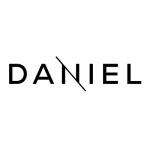It is not uncommon to hear that design protection is often underestimated or even forgotten compared to other forms of IP, like trademarks, patents, and copyright. In Brazil, that seems to be the case when you compare the average of 6,000+ design applications filed annually, with the 245,000+ trademarks and 28,000+ patents filings.
However, recent changes and improvements to the examination standards related to design applications in Brazil may attract more attention to this type of protection.
Indeed, the Brazilian PTO, in March 2019, published much-needed and long-awaited guidelines related to the examination of designs. Simpler – but useful – changes include the acceptance of auxiliary figures, including amplified ("zoomed-in") views to facilitate the examiner's understanding of the object-subject of protection. More substantial modifications include changes to how priority requests are analysed – any additional embodiment in the Brazilian application will receive an office action, allowing the applicant to move it to a divisional application without claiming priority.
The Brazilian IP Law only allowed the protection of objects as a whole, with not much leeway to protect parts (partial design) of objects. This frequently led to office actions to amend the drawings. Now it is clear that the Brazilian Patent and Trademark Office (BPTO) accepts designs covering parts of objects, as long as the claimed part represents an object as a whole.
While these have been significant improvements, the BPTO is not yet satisfied.
The examination timeline of design applications has been brought down to two months from filing when no office actions are issued, and there have been talks since February of further improvements to examination guidelines by the end of the year. In particular, more precise guidelines for design applications that include a trademark within the object and offering some flexibility when a trademark is necessary to present the aesthetic form of the object, are expected.
Keep the improvements coming!













